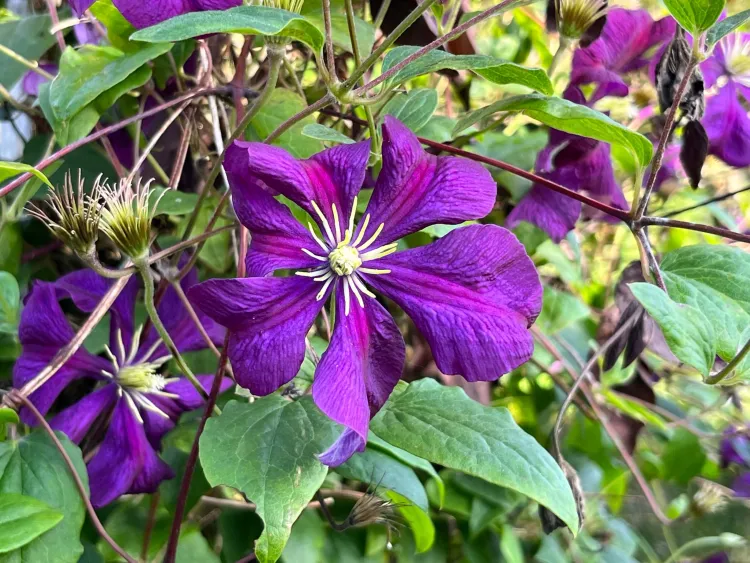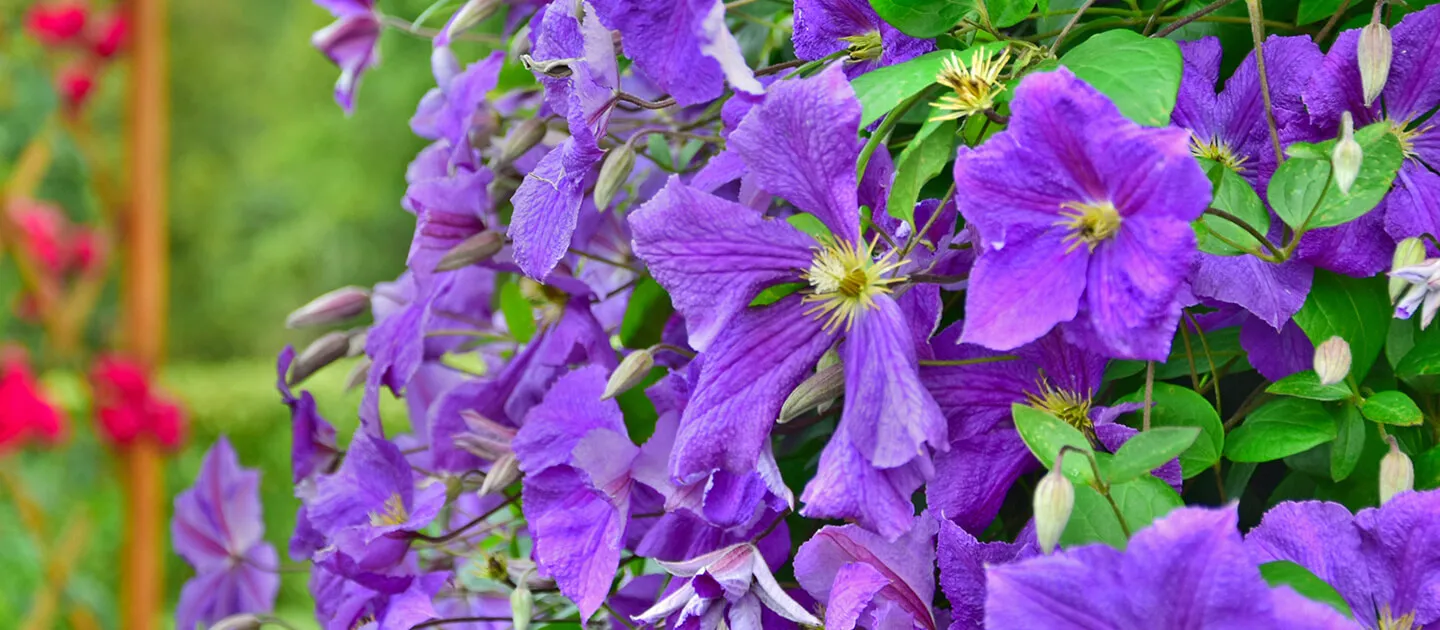With abundant blooms in a wide range of colors from soft white to dark purple, pink and even yellow, clematis reign supreme among climbers.
A genus in the buttercup (Ranunculaceae) family, clematis are versatile, easy-to-maintain perennials that grow as climbers, spreading shrubs or groundcovers. More than 300 species grow worldwide, including many native to North America.
The flowers and foliage depend on the species. Four to eight sepals surrounding a cluster of stamens form showy blooms in the shape of bells or stars. Their leaves may be deciduous or evergreen, typically compound with several leaflets and arranged alternately along the stem.

They thrive in locations where their foliage and flowers receive sun while their roots remain shaded. A low-growing bush, decorative stones or mulch will do the trick to shade the base of the plant.
Clematis enjoy moist and well-drained soil with neutral to slightly alkaline pH. Their deep roots require thorough watering. As heavy feeders, they will benefit from a low-nitrogen, slow-release fertilizer applied as needed during the growing season.
Depending on the species, clematis can thrive in U. S. Department of Agriculture Hardiness Zones 3 to 11 and bloom from spring to fall. They adapt to many climates, temperatures and soil types, which explains their presence in forests, along rivers and on mountains and rocky slopes throughout the world.
These plants are divided into three large flowering groups designated as Group (or Type) 1, 2 and 3. The timing and method of pruning depends on which group and is crucial to ensuring abundant blooms.
- Group 1: flowers in early spring (often with small flowers) and blooms on old (previous year’s) stems. They do not require pruning, but you can prune them lightly in summer after flowering to remove dead or damaged shoots, and cut back branches above a large bud.
- Group 2: flowers in late spring and fall. These large-flowered varieties bloom on old and new wood. Prune lightly before flowering in spring by removing dead branches and cutting weak ones just above a bud. To encourage fall blooms, perform a second pruning by cutting the plant to half its height after spring flowers fade.
- Group 3: flowers in summer or fall on new wood. Prune them a foot above ground in late winter to encourage new growth.
All parts of the clematis plant are poisonous to humans and animals. When crushed or damaged, the plant releases a toxic compound that irritates the skin and can be harmful if ingested. It is advisable to plant them in an area least accessible to children and pets. While the plant's toxicity generally repels deer and rabbits, young shoots remain vulnerable.
Like any climbers, clematis plants need support to wind their tendrils. Whether using a trellis, wire mesh or netting, it is important that the support is installed 4 inches away from a wall to allow space for the plant to grow behind it.
To plant, dig a hole 8 to 12 inches away from the wall. It should be deep enough to bury the first set of leaves and wide enough to position the clematis at an angle with its stems towards the support.
Fill the hole with water and allow it to drain. Place the plant in the hole and water again. Add top soil around the sides of the root ball and the first set of leaves, then pat down gently.
Finish by applying a general amount of compost followed by a 1- to 2-inch layer of mulch. With proper care, these remarkable vines will grace your landscape for decades.
For questions about growing clematis or other plants, contact the University of Vermont Extension Master Gardener Helpline at https://go.uvm.edu/gardenquestion.
